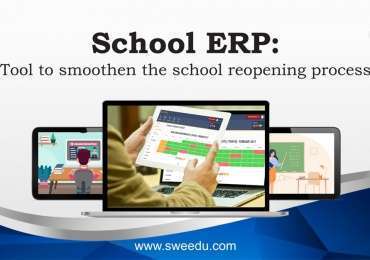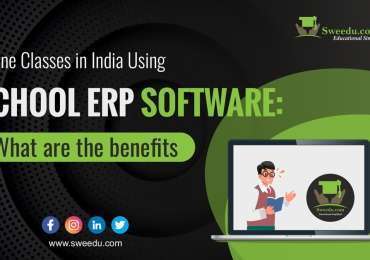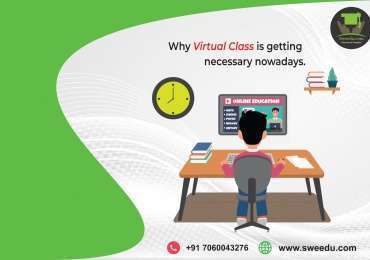
Nowadays education adopts a different environment. The traditional concept of a classroom with rows of desks and one teacher standing in front of students addressing the whole group is easily transformed into creative eLearning systems. Following the pandemic, educational institutions did not have a choice but to go online. With technology taking charge in many different sectors of life, education has also gone a step further and adopted the model of virtual learning as a possible alternative to traditional classroom learning.
This blog represents a well-articulated discussion of the learning models, stating their pros and cons, the evolution of learning into a virtual class format and their impact on teachers & educators. It is essential to know the structure, benefits and challenges of both forms before making the head-on decision. Therefore, let’s analyze them further.
Traditional Classes
In a traditional classroom setting, an education model uses a structure of human interaction where the student and teacher participate in direct exchange face-to-face in a physical environment. Classroom engagement depends a lot on verbal communication, hands-on practice and feedback at the moment. The classes are situated in schools, colleges or universities that follow a certain timetable while socializing with other students and participating in extracurricular activities.
Pros of Traditional Classrooms
-
-
-
- Face-to-Face: Better communication would be built from this social skills would certainly improve and collaborative learning would exist.
- Structured Learning Environment: Disciplined student routine because direct supervision is given.
- Immediate Feedback: Teachers can assess body language and immediately give corrections in such cases.
- Practice-Oriented: This means good access to physical resources such as labs, libraries, and activities.
-
-
Cons of Traditional Classes
-
-
- Limited Access: Physical attendance is necessary for the students to attend classes thus making it less flexible for remote learners.
- Heavy Expenses: There are very huge investments made in building the infrastructure, hiring faculties and running their transport.
- Difficulties in Scalability: Any efforts toward increasing the number of students would need to have more physical space as well as more resources.
- Time Restrictions: A fixed schedule that may not suit many, particularly working professionals.
-
Virtual Classroom
A virtual classroom converts traditional education into the digital genre where students can attend classes from anywhere online. Interactive learning was enabled by using LMSs, video conferencing tools, and cloud resources. Virtual classrooms have broken geographical barriers with flexibility and scalability, enhanced with AI analytics, automated assessment, and multimedia tools, to ensure an individualized experience.
Pros of Virtual Classes
-
-
- Flexibility and Access: Lessons delivered anywhere and at any time lifting restrictions to physical location and time.
- Cost-Effective: Savings from travel, infrastructure and printed documents.
- Scalability: No limit on the number of students thus accommodating more without the need for a physical space for these students.
- Learning Technology: AI-driven analytics, gamification and interactive tools work towards student engagement and experience in personalized learning.
- Automated Assessments: Grading instantly, detecting plagiarism and tracking performance through evaluation makes assessment much more efficient.
-
-
Cons of Virtual Classrooms
-
-
- No Social Interactions: A socially deprived setting can lead to not very up-to-par communication and teamwork skills.
- Excessive Dependency on Technology: More and more increasingly reliant on high-speed internet, digital literacy and continuous technical support.
- Self-discipline and motivation needed: No close supervising of the students by professors, thus the person should have perfect time management skills to avoid losing interest.
-
Evolution of Learning into a Virtual Class Forma
Virtual classrooms have changed the concept of learning to a simpler, flexible, fast and easy one. Students are now able to participate in their lessons anywhere in the world; Geographic location is no longer a barrier. Flexible education through AI-driven analytics, interactive tools and cloud-based learning management systems allows even more personalized education, making knowledge more adaptive to individual pupils’ learning styles. Student engagement is maximized with automated assessments, real-time tracking and multimedia integration to bring them closer to success in terms of retention and academics.
Impact on Teachers & Educators
Virtual education today means that the function of the teacher is no longer to be an instructor but a guide and that requires teachers to be open to the challenges and learn new technologies and methods like learning management systems, AI-powered assessments and online engagement tools. While such flexibility is an advantage of virtual classes, it also requires teachers to skill in technology, digital content development and methods for student engagement. Lastly, the student experience will benefit from the best scalable unit of education where both virtual and in-person instruction happens.
Which One is the Right Choice?
There is no definite answer for it. Both models have their own strengths and weaknesses. Virtual learning is superior in terms of scalability, cost-effectiveness and flexibility, making it quite suitable for modern education; traditional learning is still indispensable for skills that require hands-on practice and direct instruction.
How Sweedu Bridges the Gap
Sweedu Virtual Classroom takes the best of both worlds in any learning setting. AI-driven engagement tools for real-time performance tracking and seamless content delivery allow Sweedu to provide an engaging and effective learning experience. Institutions may choose to go full virtual or hybrid. Sweedu will supply them with the technical backbone to bolster the educational experience.
Conclusion
Education in the future will not be a choice between either blend but a combination of these two, leveraging technology to create a hybrid learning experience to ensure efficiency and engagement. Sweedu’s Virtual Classroom takes institutions swiftly into the future with scalable, cost-effective and interactive student-teacher learning that works to the advantage of both.
Start a free demo of Sweedu for your institution and be part of that future.
BIO
Sweedu is a complete school management software solution aimed at the digitalization and streamlining of educational institutions by transforming the way education is given and received. It helps schools with virtual classrooms, automation of student attendance, AI performance analytics and paperless management systems to run more efficiently while improving the student experience. Through its multi-branch management system, ERP solutions and real-time communication tools, Sweedu bridges the scalability of schools, colleges and coaching institutes without bottlenecks in operations.





